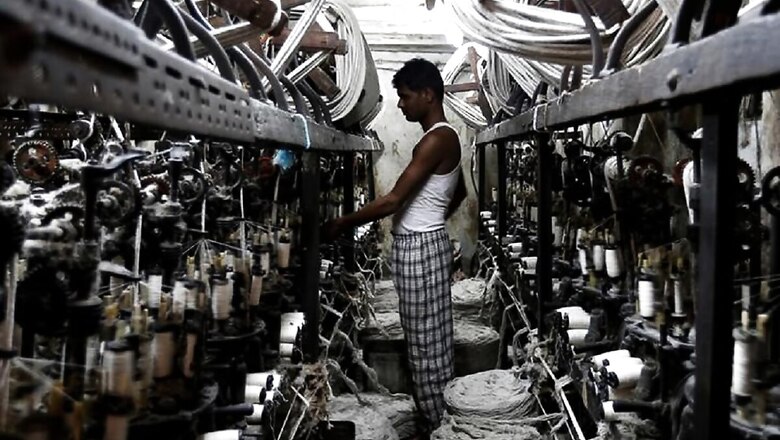
views
Resurgence in Covid-19 cases is the main headwind for the global economy, and in India the steady rise in coronavirus caseloads will have an adverse impact on the country’s economic growth, says a report. According to Dun & Bradstreet’s Country Risk and the Global Outlook report, the pandemic will induce long-term structural changes in the global economy.
“In India the steady rise in caseloads and the spillover effects of the strict lockdown measures will continue to undermine the growth impulses,” said Arun Singh, Chief Economist, Dun & Bradstreet. Singh added that “restrained government finances, probable defaults by firms and the consequent subdued investment demand will continue to be a drag on growth.” India’s economy suffered its worst slump on record in April-June, with the gross domestic product (GDP) contracting by 23.9 per cent as the coronavirus-related lockdowns weighed on the already-declining consumer demand and investment.
According to Singh, “the resurgence in COVID-19 cases is the main headwind for the global economy, with new cases in many countries in late September approaching or even exceeding their earlier peaks.” Citing an OECD study, Singh said households in the advanced economies will increase their propensity to save as a precaution against any further crises, while business investment will be lower, particularly for companies with high levels of debt. “Both developments will mute demand and therefore economic growth,” he noted.
As per the report, the short-term economic outlook remains highly uncertain, with significant variations across countries and sectors. “Of the three economic powerhouses, China will grow by just 0.6 per cent, while the US and the euro zone will contract by 5.5 per cent and 8.3 per cent respectively,” the report noted. If the governments and populations of countries fail to eliminate the virus and its direct/indirect economic effects, only a few economies will be net beneficiaries of the ‘global’ recovery, it cautioned. “That list would certainly include China, Vietnam and Taiwan Region: only the first two of these saw real GDP grow in Q2, while these three were the only countries to see goods exports rise, on a year-on-year basis in July-August,” it said.
On the employment front, the report said the US employment recovered by 10.4 per cent in August compared with three months previously, that in Canada 11.8 per cent, and in the Philippines by 22.3 per cent; yet, the year-on-year loss in jobs was 6.7 per cent, 5.3 per cent and 2.9 per cent, respectively. “Many jobs will not return, and the layoffs from heavily affected sectors are just beginning. Labour force participation rates globally are falling, with female workers especially hard hit during the crisis’ early stages. If such developments are not reversed, long-term growth potential will be lower,” the report said.

















Comments
0 comment